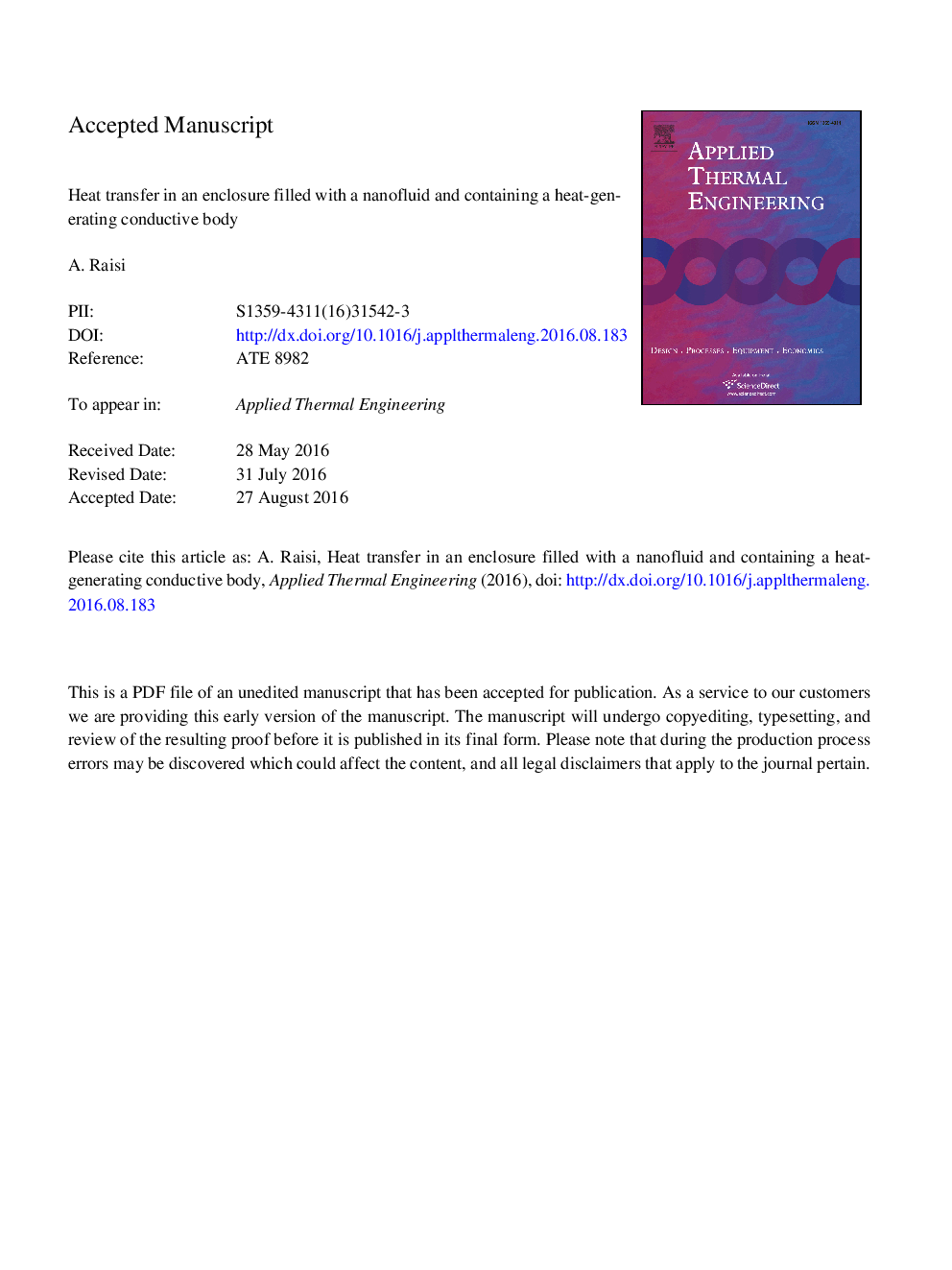| Article ID | Journal | Published Year | Pages | File Type |
|---|---|---|---|---|
| 4992034 | Applied Thermal Engineering | 2017 | 41 Pages |
Abstract
This paper performs a numerical analysis of the conjugate heat transfer within a square enclosure full of a copper-water nanofluid. The enclosure also contains a heat-generating solid square block (a heat source) at the center. While the horizontal walls of the enclosure are considered adiabatic, its vertical walls are maintained at a constant low temperature. A control volume finite difference scheme, along with the SIMPLE algorithm, is adopted to conduct the numerical analyses and solve the discrete equations. The results of the numerical analyses are then used to clarify the effects of relevant factors, e.g. Rayleigh number, solid volume fraction, thermal conductivity of the heat source and length ratio on the flow field and heat transfer. The results are reported in terms of streamlines, isotherms, velocity and temperature profiles across the enclosure, and local and average Nusselt numbers. According to my findings, augmentation of Rayleigh number and the solid volume fraction enhance the thermal performance of the enclosure. Moreover, the increase in the length ratio affects the rate of heat transfer. Finally, higher thermal conductivity of the heat source is associated with increments in the temperature of the nanofluid in the enclosure, the temperature of the heat source, and the average Nu.
Related Topics
Physical Sciences and Engineering
Chemical Engineering
Fluid Flow and Transfer Processes
Authors
A. Raisi,
